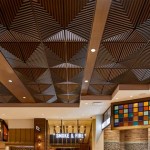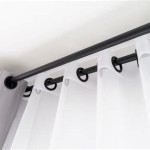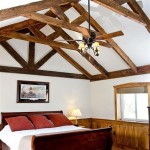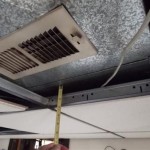How To Install a Ceiling Fan in a Vaulted Ceiling
Installing a ceiling fan in a room with a vaulted ceiling can enhance both the aesthetics and functionality of the space. The sloped ceiling, while adding architectural interest, presents unique challenges compared to a flat ceiling installation. Careful planning and the use of appropriate materials are essential for a safe and effective installation. This article outlines the process of installing a ceiling fan in a vaulted ceiling, covering the necessary preparations, step-by-step instructions, and key considerations.
Before commencing the installation, it is crucial to understand the principles of electrical safety. Working with electricity poses inherent risks, and adherence to safety protocols is paramount. This includes disconnecting power to the circuit at the breaker box and verifying the absence of voltage with a non-contact voltage tester. Familiarizing oneself with local electrical codes and regulations is also essential to ensure compliance and prevent potential hazards.
Preparation and Planning
The initial stage of installing a ceiling fan in a vaulted ceiling involves thorough preparation and planning. This encompasses several critical steps, including assessing the ceiling structure, selecting the appropriate mounting hardware, and gathering the necessary tools and materials. Neglecting this phase can lead to complications during the installation process and potentially compromise the safety and stability of the fan.
First, the structural integrity of the ceiling must be assessed. Not all ceilings are designed to support the weight and dynamic forces exerted by a rotating ceiling fan. In many cases, the existing electrical box is inadequate and must be replaced with a fan-rated box specifically designed to bear the load. This box must be securely attached to a structural element, such as a ceiling joist, using appropriate fasteners. If the ceiling lacks suitable support, reinforcement may be required, potentially involving the installation of additional bracing or a fan brace between joists.
Next, the appropriate mounting hardware must be selected. Vaulted ceilings necessitate the use of a downrod, which is a metal extension rod that connects the fan motor to the mounting bracket. The length of the downrod is determined by the slope of the ceiling and the desired height of the fan. A longer downrod is required for steeper slopes to ensure the fan blades are sufficiently far from the ceiling for optimal airflow. The angle of the vaulted ceiling must also be measured to ensure the mounting bracket is compatible and can be securely attached. Universal mounting brackets are available that can accommodate a range of ceiling angles.
Finally, all the necessary tools and materials should be gathered. These typically include: a non-contact voltage tester, a screwdriver set (both Phillips and flathead), wire strippers, wire connectors (wire nuts), electrical tape, a ladder, a stud finder, a drill with various drill bits, a level, a measuring tape, and safety glasses. Having all these items readily available will streamline the installation process and minimize interruptions.
Step-by-Step Installation Process
Once the preparation and planning phase is complete, the actual installation of the ceiling fan can begin. This process involves several distinct steps, each requiring careful attention to detail to ensure a safe and functional installation.
1.
Disconnect Power:
The first and most critical step is to disconnect the power to the circuit at the breaker box. Locate the breaker that controls the ceiling fixture and switch it to the "off" position. Use a non-contact voltage tester to confirm that the power is indeed off before proceeding. This step is essential to prevent electrical shock.2.
Remove Existing Fixture:
Carefully remove the existing light fixture, taking note of the wiring connections. Typically, there will be a black (hot) wire, a white (neutral) wire, and a green or bare copper (ground) wire. Disconnect the wires and use wire connectors to cap them off temporarily. Lower the fixture and set it aside.3.
Install the Mounting Bracket:
If necessary, replace the existing electrical box with a fan-rated box. Securely attach the mounting bracket to the electrical box, ensuring it is flush with the ceiling. For vaulted ceilings, use a mounting bracket designed for sloped surfaces. The bracket should be able to pivot or adjust to accommodate the angle of the ceiling. Use a level to ensure the bracket is properly aligned.4.
Assemble the Fan Motor and Downrod:
Assemble the fan motor according to the manufacturer's instructions. This typically involves attaching the downrod to the motor housing. Ensure the downrod is the appropriate length for the vaulted ceiling. Route the wires from the motor through the downrod.5.
Hang the Fan Motor:
Carefully lift the fan motor assembly and hang it from the mounting bracket. The bracket should have a hook or loop specifically designed to support the fan motor while you connect the wiring. This allows you to work with both hands.6.
Connect the Wiring:
Connect the fan wires to the house wiring, matching the colors: black to black, white to white, and green or bare copper to green or bare copper. Use wire connectors to secure the connections and wrap them with electrical tape for added insulation. Ensure that all connections are tight and secure. Tuck the wires neatly into the electrical box, taking care not to pinch or damage them.7.
Attach the Fan Blades:
Attach the fan blades to the motor housing according to the manufacturer's instructions. This typically involves using screws to secure the blades to the blade holders and then attaching the blade holders to the motor housing. Ensure that all screws are tightened securely.8.
Install the Light Kit (If Applicable):
If the fan includes a light kit, install it according to the manufacturer's instructions. This typically involves connecting the light kit wiring to the fan wiring and attaching the light fixture to the motor housing. Ensure that all connections are tight and secure.9.
Install the Fan Canopy:
Slide the fan canopy up to the ceiling to conceal the mounting bracket and wiring. Secure the canopy to the mounting bracket according to the manufacturer's instructions. This typically involves using screws to attach the canopy to the bracket.10.
Restore Power and Test:
Restore power to the circuit at the breaker box. Test the fan to ensure it is functioning properly. Verify that the fan blades are rotating in the correct direction and that the light kit (if applicable) is working. If necessary, reverse the direction of the fan blades to optimize airflow for the season.Key Considerations for Vaulted Ceiling Installations
Installing a ceiling fan in a vaulted ceiling presents specific challenges that must be addressed to ensure a safe, effective, and aesthetically pleasing installation. Beyond the basic installation steps, several key considerations warrant particular attention.
First, the
downrod length
is crucial for optimal airflow and visual appeal. The general rule is that the fan blades should be at least 7 feet above the floor. In a vaulted ceiling, the downrod length must be calculated to account for the slope of the ceiling and ensure the fan blades meet this minimum height requirement. A longer downrod will be needed for steeper slopes. Using a downrod that is too short can result in the fan being too close to the ceiling, hindering airflow and potentially creating a visually awkward appearance. Conversely, a downrod that is excessively long may make the fan appear disproportionate and less effective in circulating air.Second,
airflow direction
is a vital consideration for year-round comfort. During the summer months, the fan should rotate counterclockwise to create a cooling breeze. This airflow pattern pushes air down, creating a wind chill effect. During the winter months, the fan should rotate clockwise at a low speed to circulate warm air that has risen to the ceiling. This airflow pattern gently pulls air up, pushing the warm air back down into the room. Many ceiling fans have a switch that allows you to easily change the direction of rotation.Third,
balancing the fan blades
is essential to prevent wobbling and noise. Over time, ceiling fan blades can become unbalanced due to dust accumulation or slight variations in weight. Unbalanced blades can cause the fan to wobble, which can be annoying and potentially damage the fan motor. Most ceiling fans come with a balancing kit that includes small weights that can be attached to the blades to correct any imbalance. Carefully follow the instructions provided with the balancing kit to identify and correct any wobbling. If the fan continues to wobble after using the balancing kit, it may be necessary to tighten all the screws on the fan blades and motor housing.Finally, if encountering any difficulties or feeling uncomfortable with any aspect of the installation process, it is always recommended to consult with a qualified electrician. Electrical work can be dangerous, and attempting a task beyond one's skill level can result in injury or property damage. A qualified electrician can ensure the installation is performed safely and correctly, meeting all local electrical codes and regulations.

Ensuring Proper Ceiling Fan Installation With Vaulted Ceilings

How To Install A Ceiling Fan On Sloped Lemon Thistle

How To Install Vaulted Ceiling Fan

How To Choose A Ceiling Fan For Vaulted Ceilings Lightology

How To Choose A Ceiling Fan For Vaulted Ceilings Lightology

How To Install A Ceiling Fan On Sloped Lemon Thistle

How To Choose A Ceiling Fan For Vaulted Ceilings Lightology

How To Hang A Ceiling Fan From Vaulted Homes Valy

How To Install A Ceiling Fan On Sloped Lemon Thistle

Cathedral Ceiling Fan Installation Instructions
Related Posts








